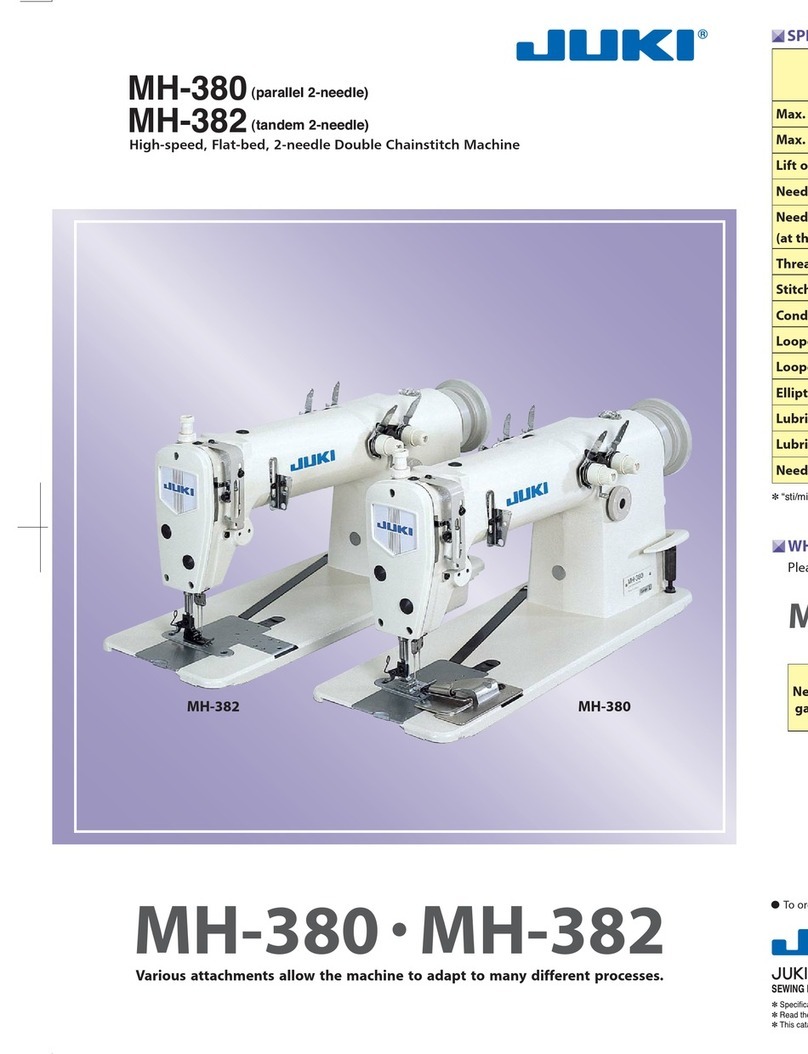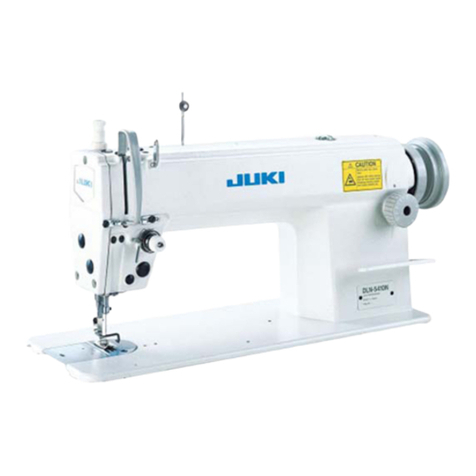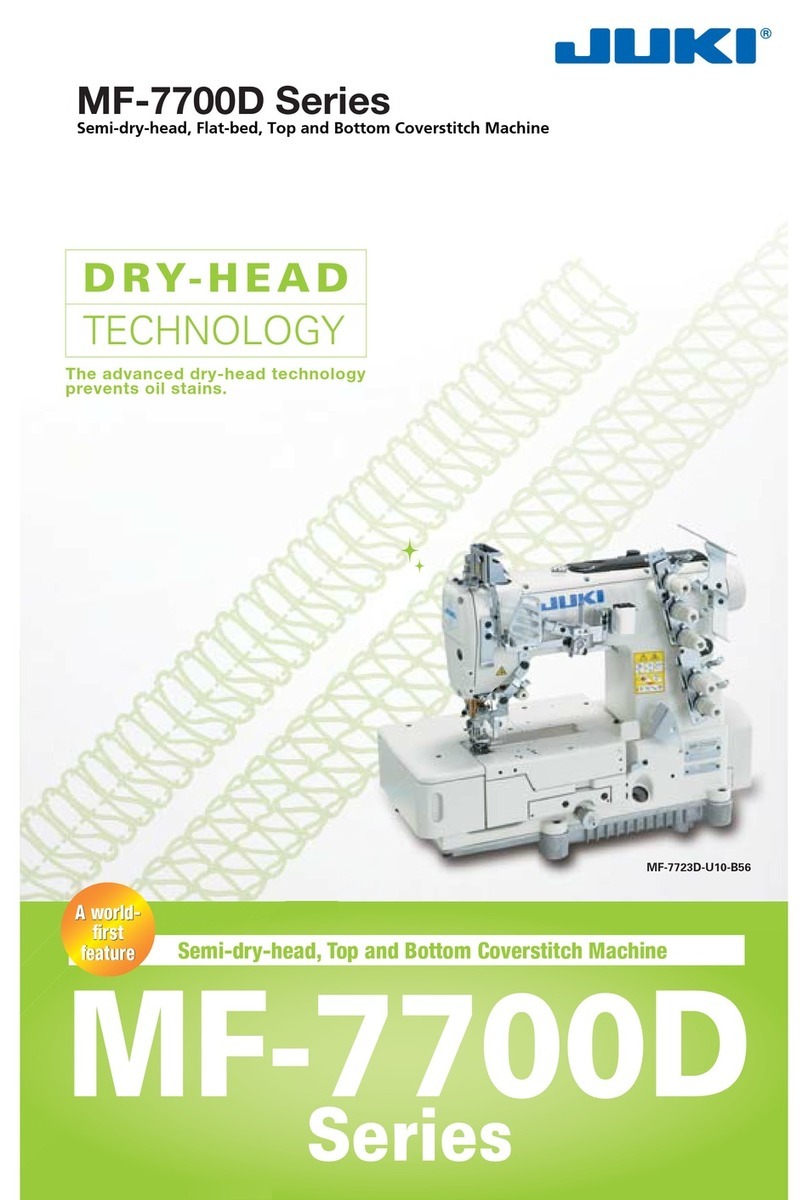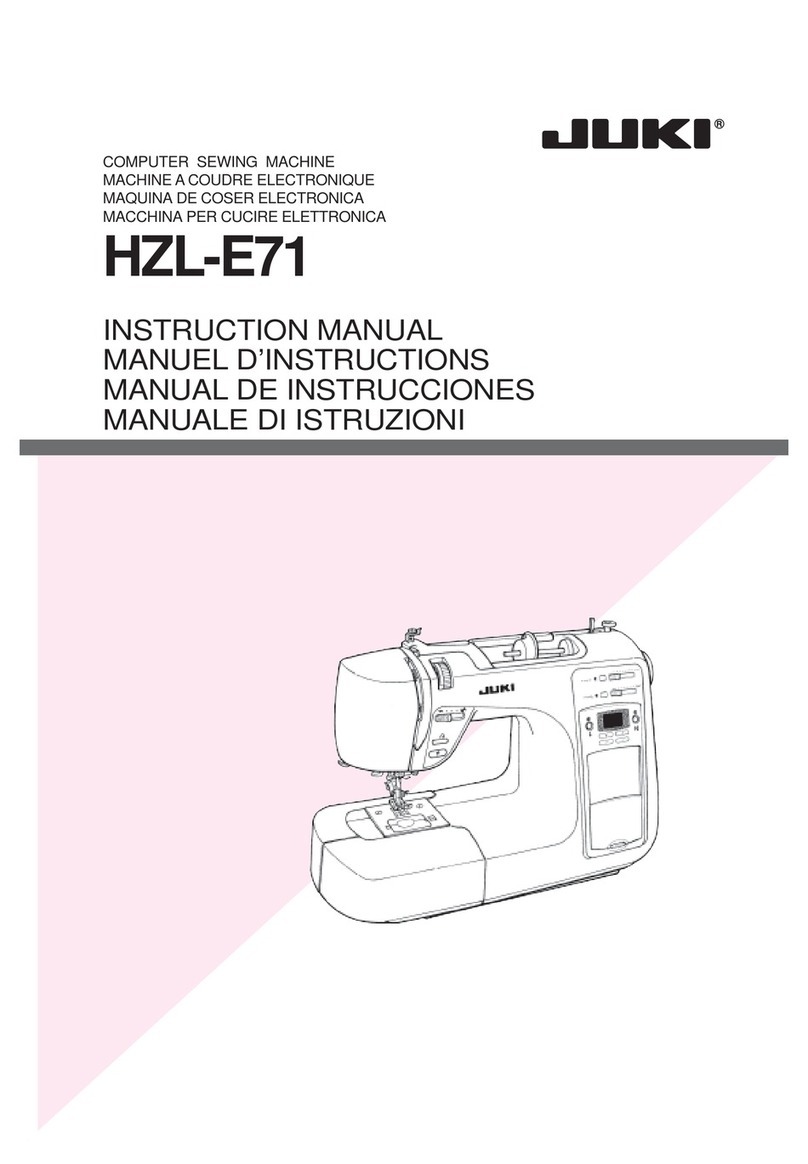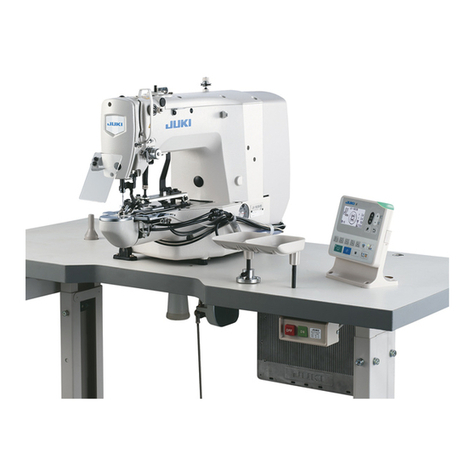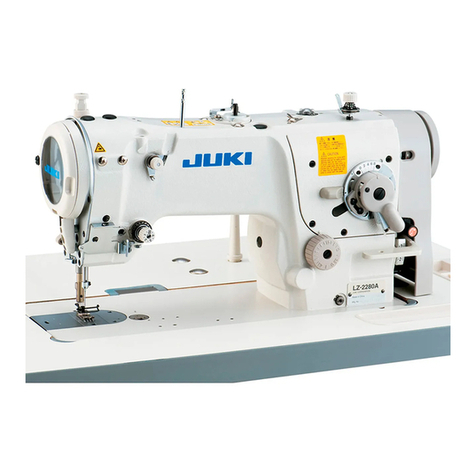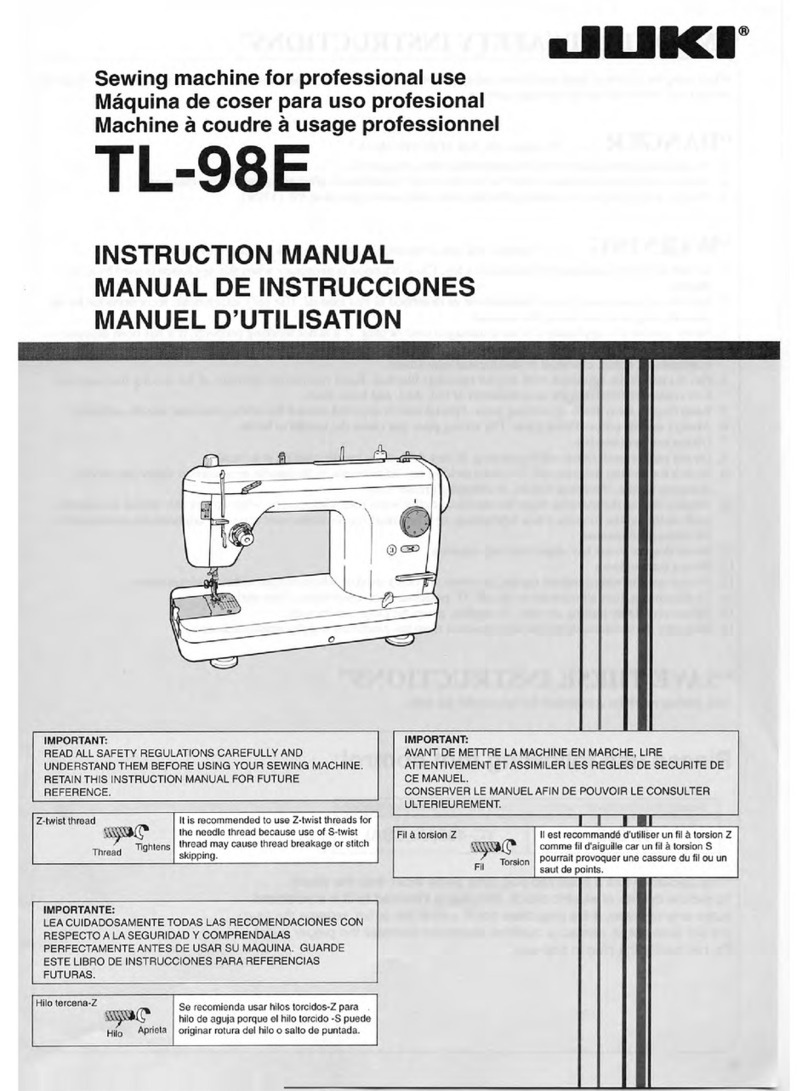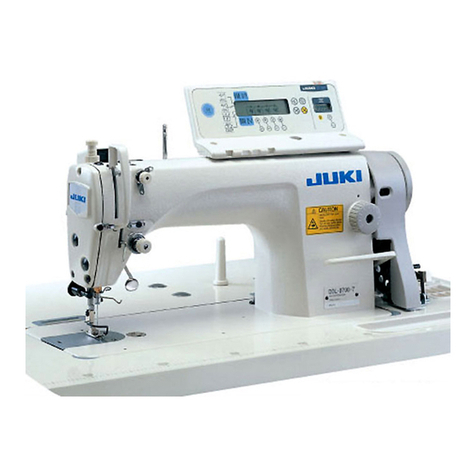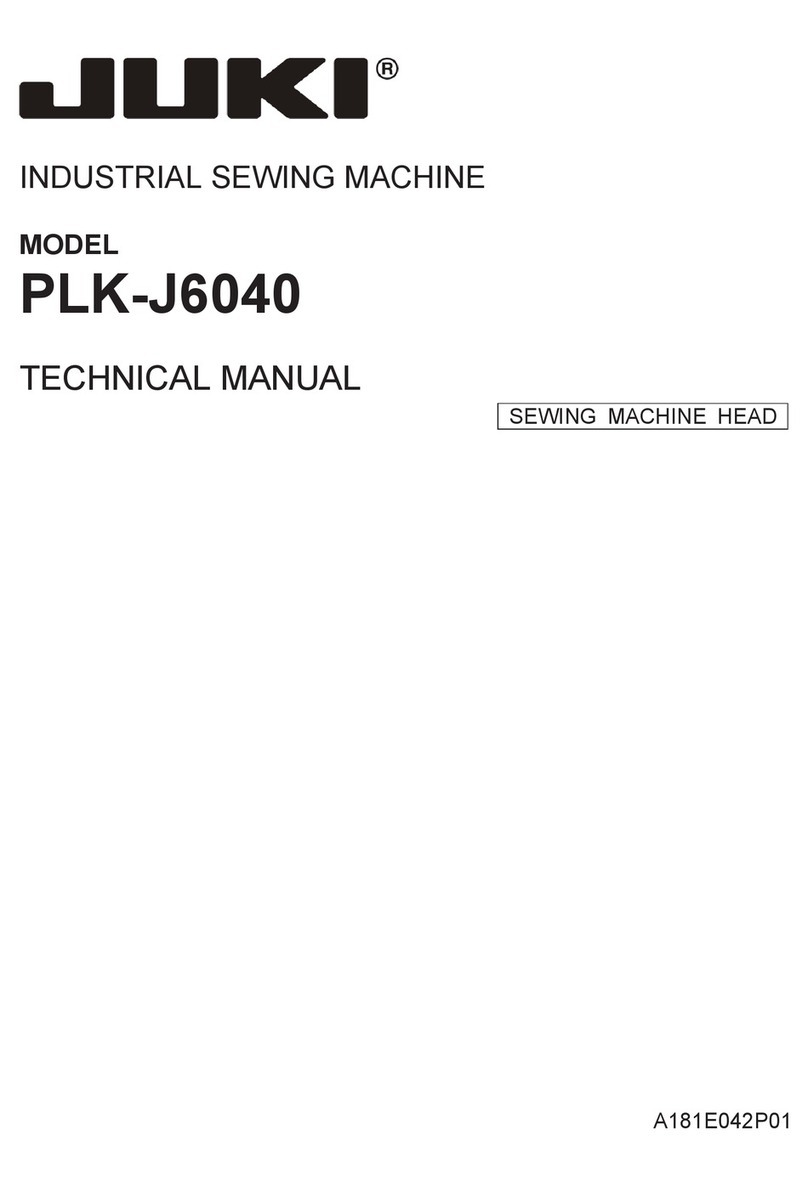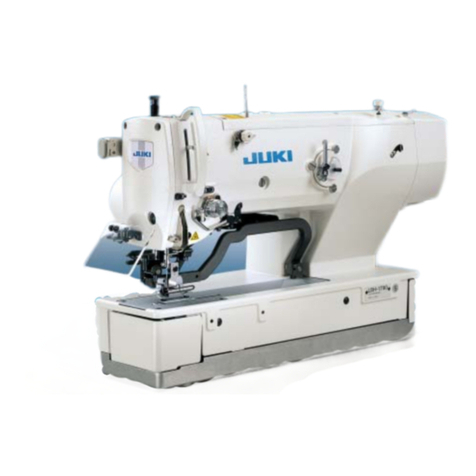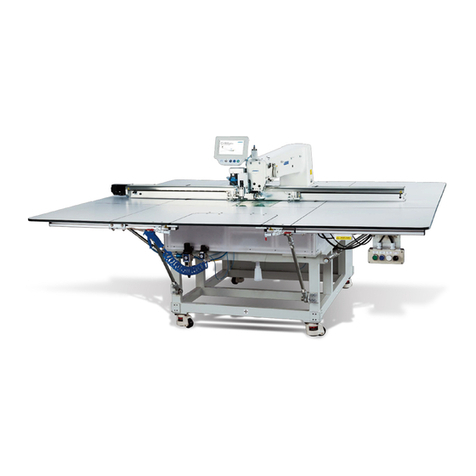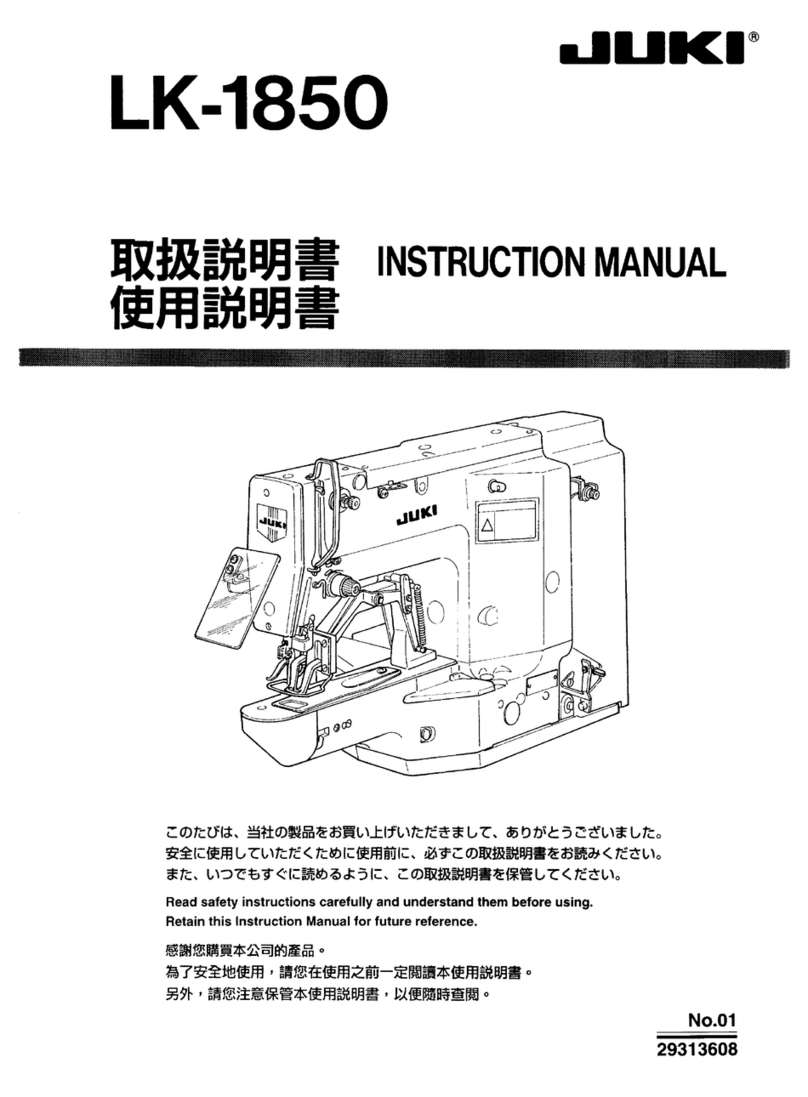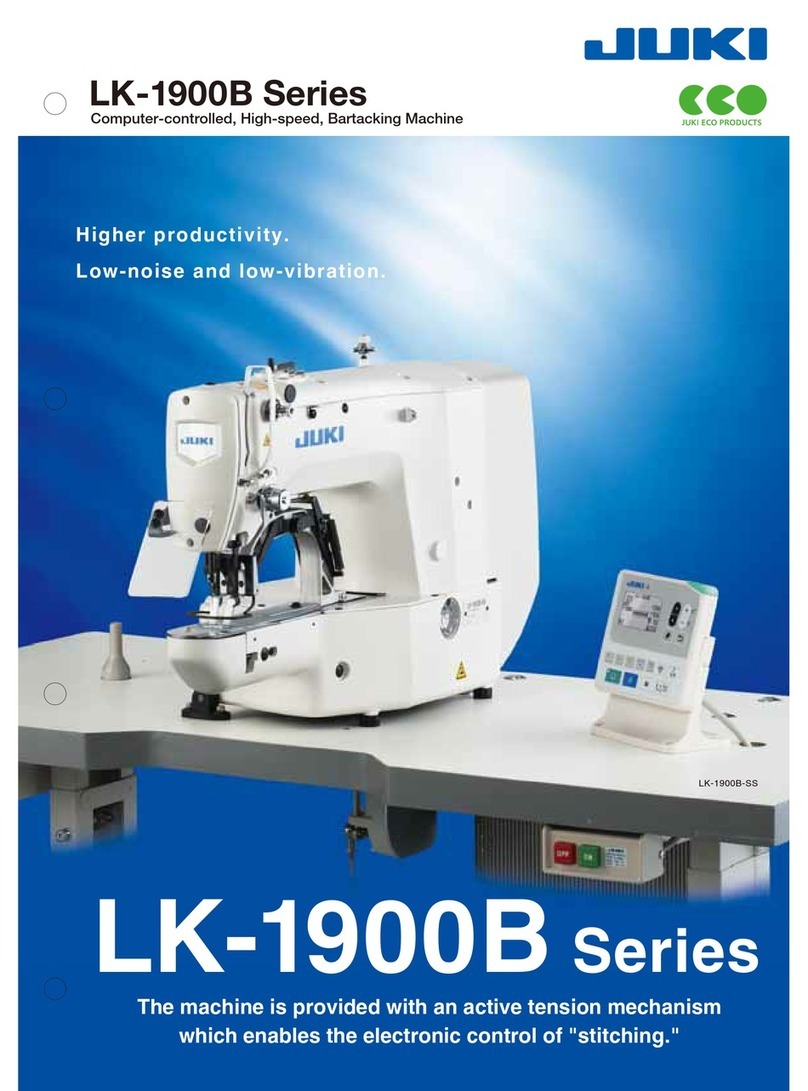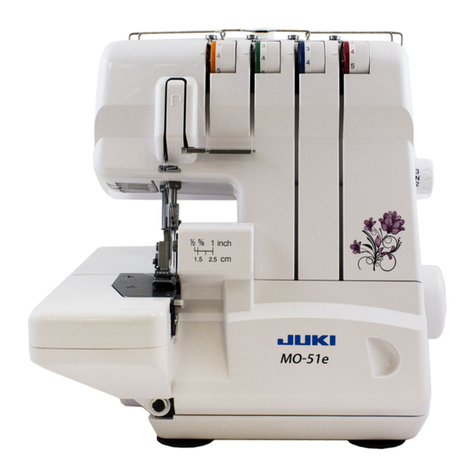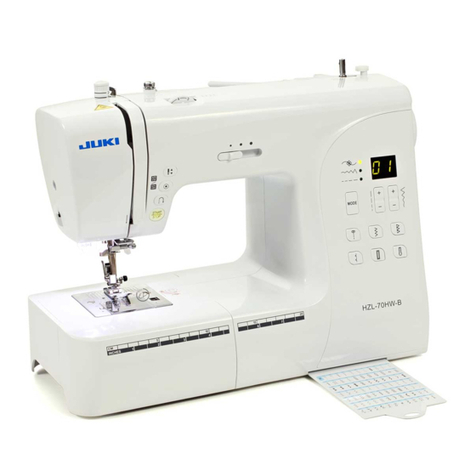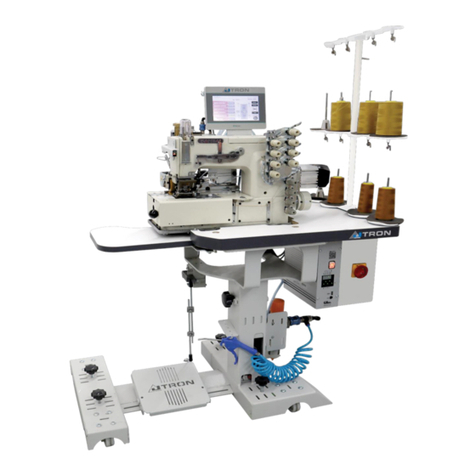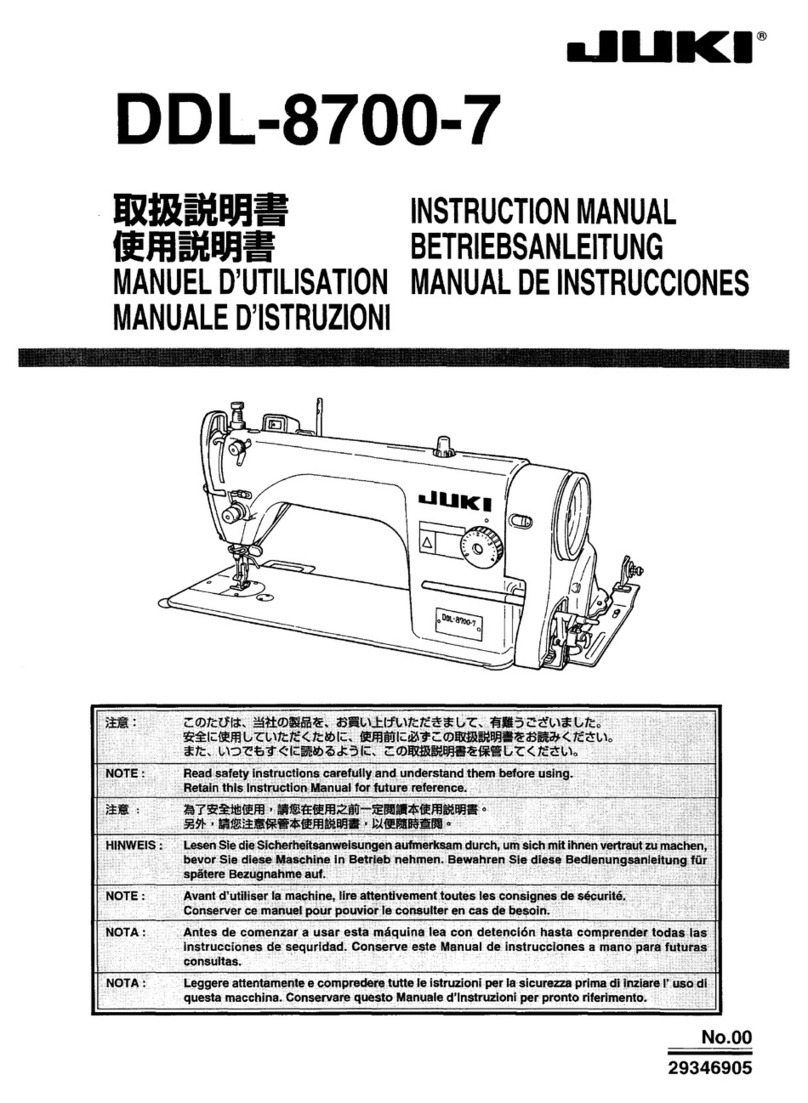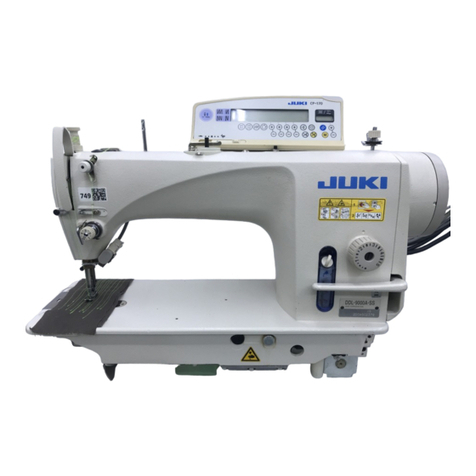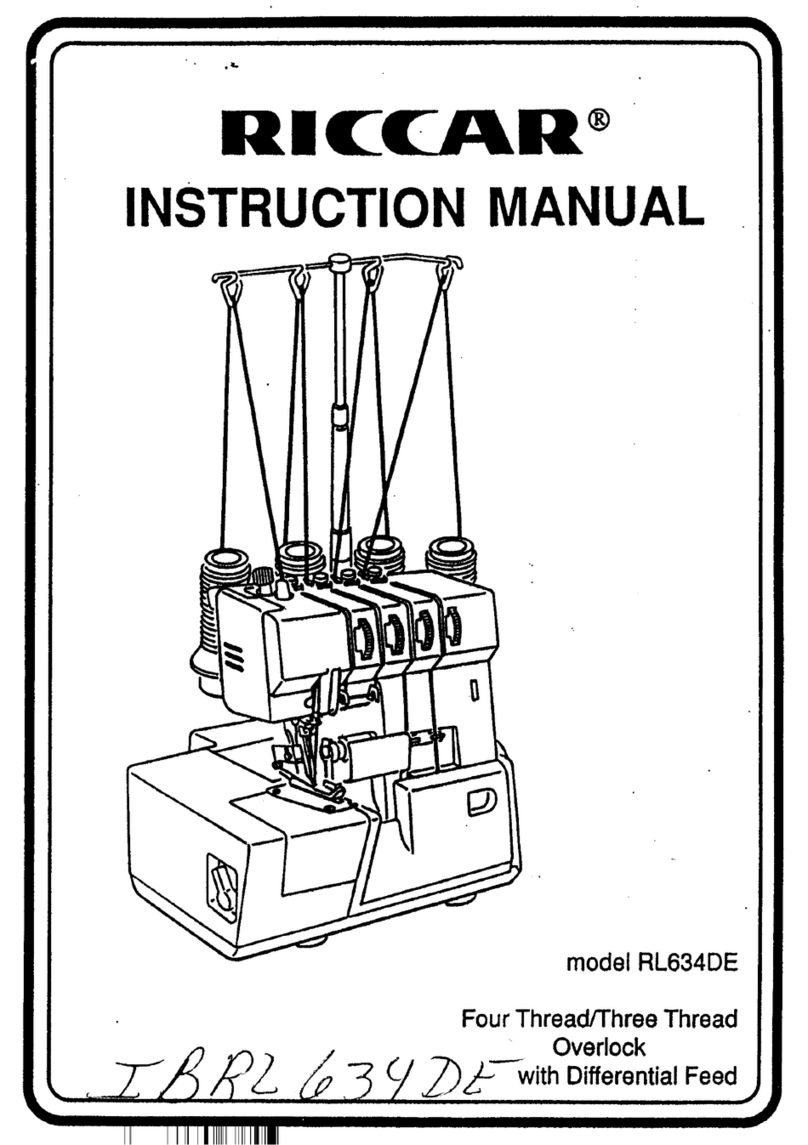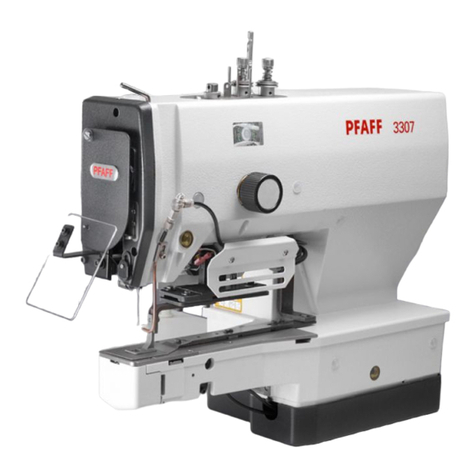STITCH
FAILURE CAUSES CORRECTIVE
MEASURES
1. Needle
breaking (l) Needletypelswrong.
(2) Needlecount isnot correct.
(3) Needleis not installed correctly.
(4) Needleisnot straight.
(5) Needle-to-needle
guard
isinadequate.
(6) Needle-to-looper
relationisinadequate.
o Usea specifiedneedle.
o Usea needlesize
suitable to the thread gauge
and type of fabrics.
o Install
the needle
in the correct
way (See
8).
o Usea straight needle.
o Correct
the relation
(See
20).
o Correct
theneedle
to looperrelation(See15).
2. Cloth
is
notcut (I) Position of the upper and lower knife is
inadequate.
(2) Knife blade
hasworn out.
o Adjust the knife position(
See
1
9).
o Sharpenthe lower knife or renew the upper
knife.
3. Stitchskipping (l)
(2)
(3)
(4)
(s)
Needle-to-looperrelation is wrong.
Looper bladeisblunt.
Needleisthreaded
with S-twist
(or left-
handtwist) thread.
Threadtension
iswrong.
Double chainlooper thread
tensionisnot
enough.
o Correctthe needle-toJooper
relation
(See
15).
o Correctthe shapeof the looperbladeusing
an oilstone,or replace
it.
o Usea Z-twist (or right-hand
twist) threadwith
the needle.
o Adjust the t\read tension
(See
l0).
o Correctthe positionof the chainlooperthreac
cam
(See
l7).
4. Thread breaking (
1) Quality of the thread
ispoor.
(2) Thread
istoo thick for the needlesize.
(3) Needleisinstalledin a wrong way.
(4) Thread
tensionistoo high.
(5) Thereisa scratchor bruiseon the surface
of needle,looper,throat plateor needle
suard.
o Usea thread of good quality.
o Selecta suitableneedleor thread.
o Installthe needlecorrectly
(See
8).
o Adjust the thread
tension
(See
10).
o Remove
scratchesand bruises
usinganoil-
stone or buffing machine.
5. Double chain-off
thread stitching
arenot correct.
(MO-2416)
(I) Presserfoot doesnot evenly act on the feed
dog.
(2) Rear
presser
isshaking.
(3) Needle
threadand looper threadtensions
arenot correct.
(4) Double chain
looperisinstalled
in a wrong
wav
o Correctthe relationof the presser
foot with
the feeddog.(SeeI6).
o Adjust the rear presser.
for smooth and
steadymotion.
o Adjust
thethread
tension
(See
l0).
o Correctthe doublechain
looper(see
I 5).
6. Puckering (
I) Needleis
too thick.
(2) Tiread tension
istoo high.
(3) Pressure
appliedby the presser
foot istoo
highor too low.
(4) Feeddog comes
up too niuch from the
throat plate
surface.
(5) Knife failsto cut the fabrics
sharply.
(6) Differential feedmechanismis not set
correctly.
o Select
asuitable
needlesizefor the thread
and materials.
Adjust the thread
tension.
Correct
the presser
foot pressure
(See I 1).
Lower the feeddog.
Sharpenthe lower knife.
Correct
the differentialfeedmechanism
(See
13).
o
o
o
o
o
Irregular stitching (I) Thread is not supplied smoothly
(2) Thread
tension
istoo low.
(3) Needleis
blunt.
(4) Pressureappliedby the presser
foot is
inadequate.
(
5) Heightof the feeddogiswrong.
Usesmooth thread
with eventhicknessor
cleanup thethread
path.
Increase
the threadtension.
Useanew needle.
Adjust the presser
foot pressure
(See I l).
Adjust the heightof the feeddog(See
I6)
o
o
o
22. SPECIFICATIONS
MO-2404 MO-2414 MO-2416
Sewingspeed
(Max.) 6500
s.p.m. 6500
s.p.m. 6500
s.p.m.
Stitch length 0.8
- 4 mm(1164"
- 5132")
(special
model
:up
to 5mm) 1.5-4mm(5mm)
Needle
gauge 1.6,2.0,2.4
mm 1.6,
2.0,
2.4,
3.2,4.8,6.8mn
Overedgewidth r.6,
2.4,3.2,4.O,4.8,
6.4mm 2.0.3.2.4.0.4.8
mm 3.2,
4.0,
4.8,5.6,6.4
mm
Differential feed ratio Gatheringstitch
l:2 (Max.
l:4) Stretchingstitch
l:0.7
(Max.
l:0.6)
Needle DC x 27 (standard) (DC x I may be used)
Presser
foot lift Max. 7.0 mm\9 132")(excluding
somesubclassmodels)
Lubricating
oil JUKINew
DefrixOilNo.
2
-10-
